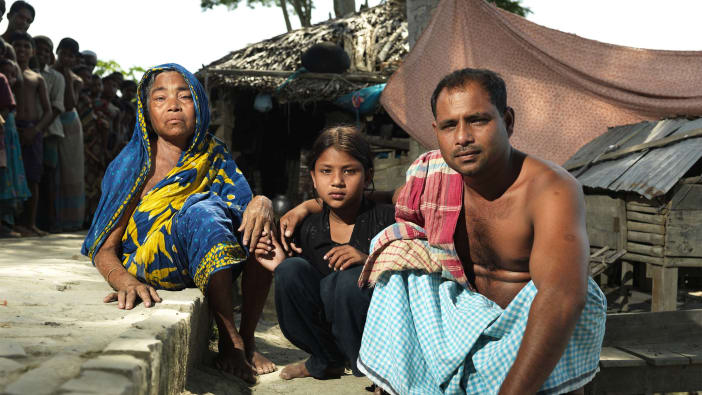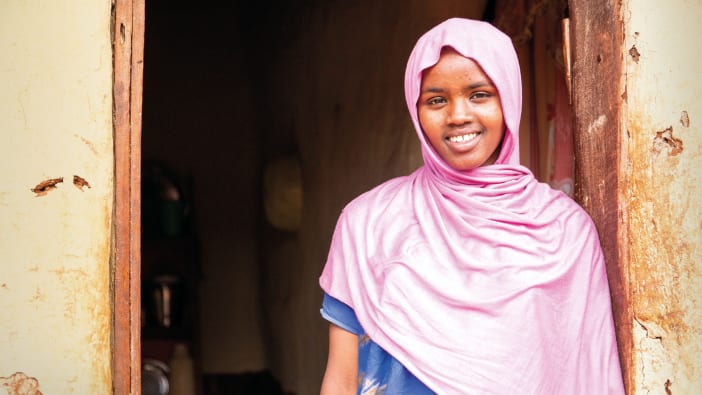by Loida Carriel and Graham Gordon.
Ayaviri is a town of 17,000 people, situated in the Andes mountains in Peru. It surrounds an ecological reserve called La Moya, which is the only place in the district that remains green throughout the year. La Moya has important historical and cultural significance. Two indigenous communities (traditional inhabitants) live on the edge of La Moya, and share it with Ayaviri. The communities keep animals in surrounding fields and during the dry season they depend on La Moya for food. However, La Moya has started to become polluted and is in danger of disappearing.
Action to save La Moya
In 1999, Pastor Eron of The Instituto Bíblico de Ayaviri (Bible Institute of Ayaviri) started raising awareness about the need to protect the reserve. Being able to speak Quechua, he met with the leader of one indigenous community and persuaded him of the need to keep the reserve clean. However, the community leadership changes each year. This showed the need for awareness-raising to be done at all levels of the community.
The other indigenous community at first accused Pastor Eron of wanting to challenge their traditions and drive them from their traditional lands. They also saw little reason to co-operate as most of the pollution and contamination came from the town of Ayaviri.
Action to save La Moya included:
- ‘cleaning days’, when the local institutions, such as the town council, university, museum and schools, together with people from the town and the communities, got together and cleared rubbish from the reserve
- removing rubbish from the reserve’s lake
- distributing leaflets urging people to protect their local environment
- broadcasting regular environmental education programmes on the local radio.
Networks for change
The Bible Institute decided to develop a network of organisations to support the work. Tearfund partner Paz y Esperanza (Peace and Hope) helped them to produce awareness-raising materials and to think through their plans for change. They worked with the museum which helped with scientific research into the causes and effects of the damage to La Moya. Together they wrote about the history of the area to show the historical and cultural importance of the reserve.
A special group, called Mesa de Concertación (Round Table), was established to facilitate discussions between the local organisations and communities. It also helps to plan the development of the area. Many local institutions and groups are part of this process.
There has been opposition to this work. For example, the candidates involved in the election for the mayor during 2002 accused those involved in the La Moya campaign of using it as a way to gain political power.
Results of the campaign
In December 2001, the mayor passed a law to prevent dumping of rubbish in La Moya reserve. He said that the Christmas celebrations, which are responsible for much of the rubbish, needed to take place elsewhere.
In November 2002 the mayor passed a law giving powers to an ‘ecological patrol’. This patrol will guard the reserve and fine people for dropping litter or urinating in La Moya.
La Moya is much cleaner now as a result of the cleaning days and a change in behaviour. The level of awareness in the communities and the town is much higher, and they see the protection of La Moya as an issue that they need to help solve.
Future issues to address
The action taken so far will not provide long-term solutions as it has not addressed the root causes of the damage. The campaign is now addressing these issues. There is a need to:
- provide more running water to houses so that people do not need to wash their clothes in the river
- supply drinking water to the indigenous communities and Ayaviri
- provide alternative places to put rubbish
- find a way to stop infected and polluted water running into La Moya
- offer an alternative area for sports
- ensure that the laws passed are enforced by each new mayor and town council
- build the capacity of the local communities to advocate for change. The new mayor has developed a proposal to turn La Moya into a tourist reserve, without consulting the local people or the Mesa de Concertación.
Another problem is that the two indigenous communities have had little participation in any discussions about the future of the area. They are still suspicious of the local authorities and fear that their land will be taken away.
As a result of this and other problems, the Bible Institute plans to:
- work with the Mesa de Concertación to ensure that it includes the indigenous communities and the poorest people in Ayaviri in the consultation and planning process
- continue to build relationships with the indigenous communities and help them to understand the causes of their poverty better. Then they can develop their own plans for La Moya and their future
- continue to raise awareness of the need to protect the environment
- strengthen contacts with organisations who can help get funding and can help with educational materials and activities that will build the capacity of the communities to take part
- mobilise members of the church to become more involved. In June 2003 Pastor Eron formed a working group which includes members from his church and members from the local community.
The authors work in Peru for Tearfund partner Paz y Esperanza (Peace and Hope). Paz y Esperanza, APDO, 181257 Lima 18, Peru E-mail: [email protected]









